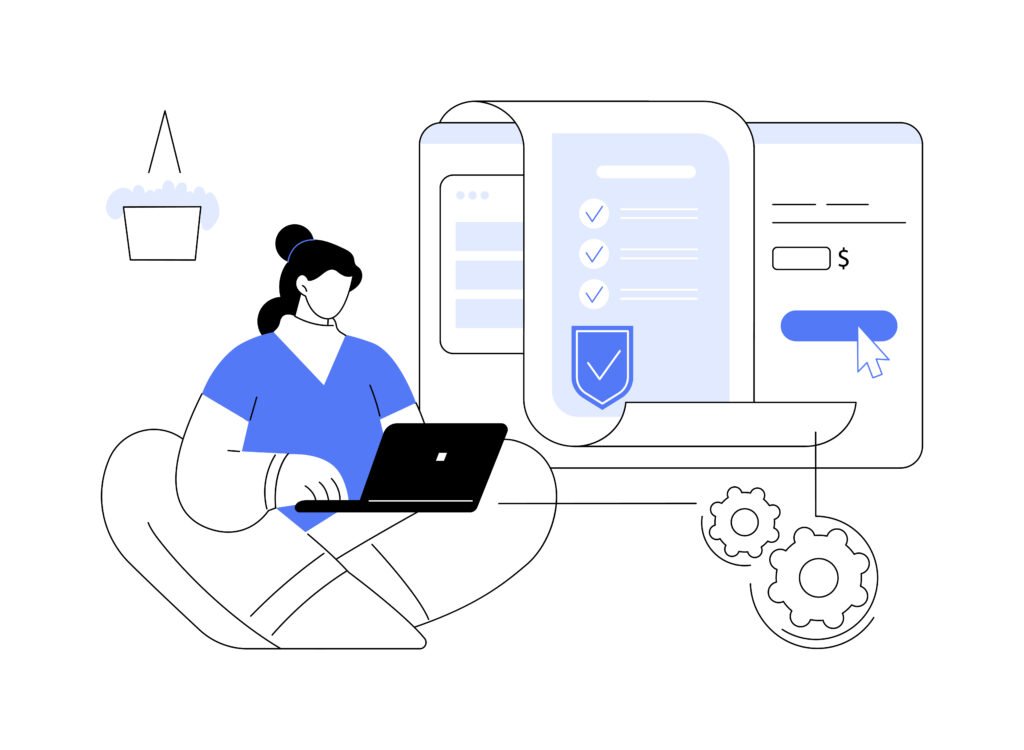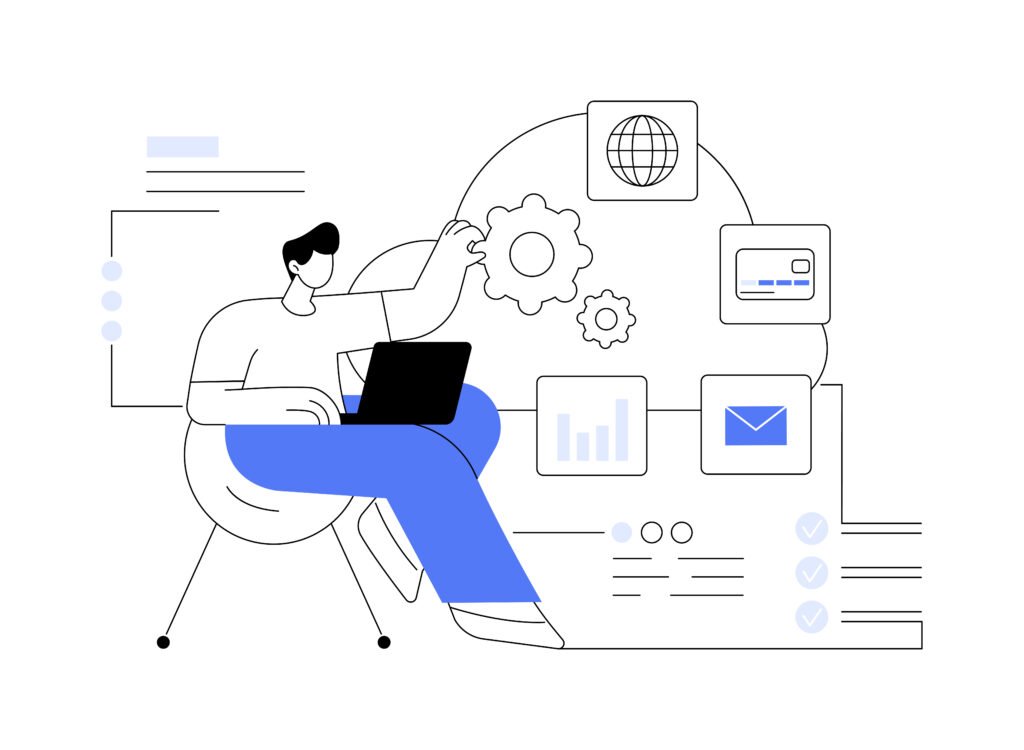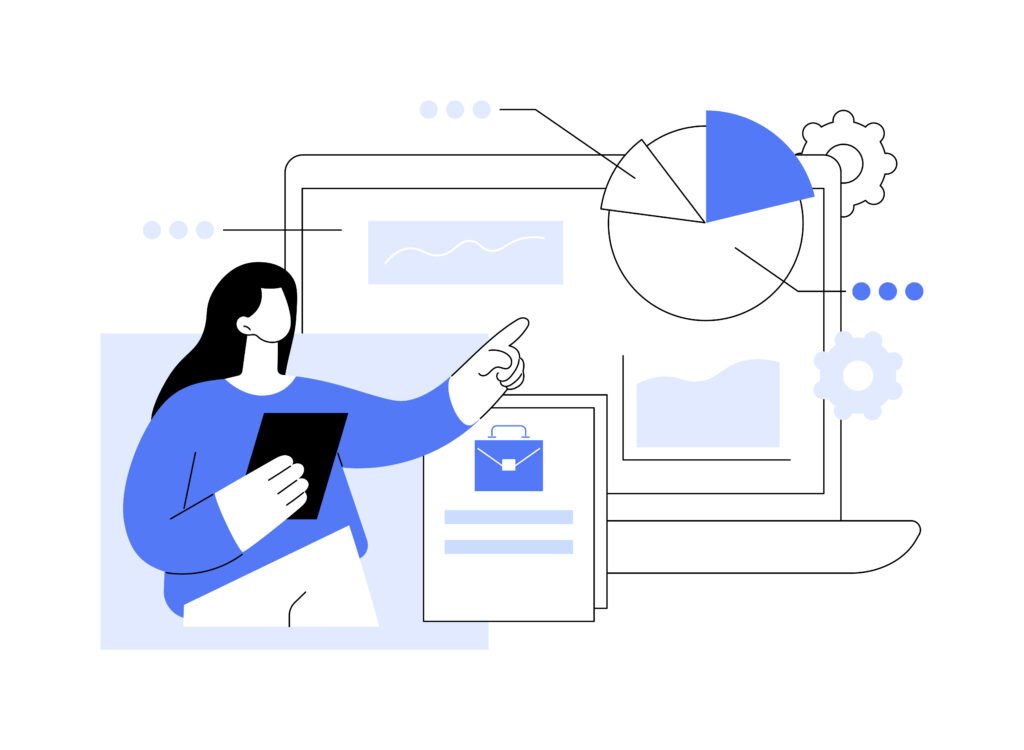4 weak points of Web content purchase systems and how to mitigate them
4 Jan 2024
Sergey Volynets

A high-performing web content purchase system shapes the subscriber’s journey and influences buying decisions. An efficient system seamlessly guides users through purchasing, providing a frictionless experience that improves conversions as well as fosters customer satisfaction and loyalty.
However, even the most robust web content purchase systems may encounter weak points that can potentially hinder positive buying decisions.
In this article, we delve into the strengths that contribute to a seamless subscriber’s and point at potential weaknesses that could undermine the system’s overall effectiveness.
Web Content Purchase Systems Implementation: Two Major Options to Know
There are various options for implementing web content purchase systems, but two major approaches are commonly used: traditional e-commerce systems and subscription-based models. Let’s explore both of them:
1. Traditional e-commerce systems
Traditional e-commerce systems involve customers purchasing individual pieces of content or products on a one-time basis. This model is prevalent in online marketplaces where users browse and buy items as needed. The workflow includes the following items:
- Product listings: Content or products are listed on a website with detailed descriptions, images, and prices.
- Shopping cart: Users can add items to their virtual shopping cart by browsing the content.
- Checkout process: Users proceed to checkout, providing necessary information such as shipping and payment information.
- Payment: Payment is processed for the selected content, and users receive access or a download link after successful payment.
- Ownership/Access: Users now own the content they purchased and can typically access it indefinitely.
Platforms like Amazon or iTunes work on this model, where users can buy individual books, music tracks, or videos.
2. Subscription-based models
Subscription-based models involve users paying a recurring fee at regular intervals (monthly, annually) to access a set of content or services. Users often get unlimited or specified access to a range of content during their subscription period. Their logic of work consists of the following points:
- Subscription plans: The platform offers various subscription plans with different levels of access or features.
- Registration/sign-up: Users sign up for a subscription plan, providing payment details.
- Access: Users have unlimited access to the specified content during the subscription period.
- Renewal: Subscriptions are automatically renewed unless canceled by the user.
- Content updates: New content is regularly added, giving subscribers continuous value.
Platforms like Netflix, Spotify, or Adobe Creative Cloud operate on a subscription model. Users pay a recurring fee for access to a vast library of content or services.
The choice between these models depends on factors such as the nature of the content, user behavior, and the business’s goals. Some platforms even combine both models, offering individual purchases alongside subscription options for greater flexibility. Most often, decision-makers pay attention to the following criteria:
- Flexibility. Traditional e-commerce offers flexibility as users can make one-time purchases, while subscription models offer ongoing access.
- Revenue stability. Subscription models provide a more stable and predictable revenue stream, whereas traditional models rely on sporadic purchases.
- User engagement. Subscription models often lead to higher user engagement as users continuously access and explore content.
- Content rotation. Subscription models can regularly update content, keeping it fresh and encouraging retention.
The Web Content Purchase System Implementation Approaches
A separate website creation
The first option for implementing a web content purchase system would be using a separate website in a hypothetical subscription-based business context. This dedicated platform serves as an intermediary between the user, the parent site (the subscription-based online magazine), and payment providers.
The purpose extends beyond facilitating content purchases; it incorporates marketing strategies like cross-selling, personalized content offers, and other to potentially increase the overall transaction value. Such implementation will include the following action items:
1. User flow
Users interested in purchasing content on the parent site encounter the enticing «Buy» button.Upon clicking «Buy,» the user is seamlessly redirected to a specialized website – the Web content purchase system.
2. Functionality of the web content purchase system
- Order placement and payment processing. The primary function of the separate site is to facilitate smooth order placement and secure payment processing for the selected content. Users can confidently complete transactions, knowing that this platform is specifically designed for efficient and secure content purchases.
- Marketing opportunities. The separate site is strategically designed to offer additional attractive offers. This can include presale promotions, bundled content options, loyalty discounts, or complementary products/services. The goal is to leverage the user’s interest in the initial content purchase and entice them to explore and potentially add more items to their cart, thereby increasing the overall transaction value.
3. Enhancing user experience
The layout and design of the separate website prioritize a user-friendly experience. Clear calls-to-action, intuitive navigation, and a seamless payment process contribute to a positive transactional journey.
4. Integration with the parent site
The separate site seamlessly integrates with the parent site, ensuring a cohesive brand experience. Consistent branding elements and a smooth transition between the two platforms maintain user trust and confidence.
5. Payment provider integration
The web content purchase system integrates with secure and reliable payment providers to facilitate various payment options. This ensures flexibility for users and contributes to a frictionless checkout process.
6. Post-purchase engagement
After completing the transaction, users may receive confirmation and relevant information regarding their purchase. This post-purchase engagement reinforces a positive experience and provides necessary details.
Microplugin development
The second option would be a particular plugin development for seamless content payments, a compact software component integrated into the main website of a subscription-based business. The examples may include:

- Card payments integration: Enables direct card payments within the parent site, enhancing security and convenience.
- Mobile wallet integration: Links mobile wallets for quick and secure multidevice transactions.
- One-click payments: Offers returning users a one-click payment option for swift transactions.
Comparable to the direct integration seen in platforms like Uber, such micro plugins streamline the payment process, ensuring a frictionless user experience engaging with our subscription-based online magazine. The potential scenario may contain the following steps:
- User action: A user exploring premium content on the subscription-based online magazine decides to make a purchase.
- Microplugin activation: Upon clicking the «Buy» button, the microplugin is activated, initiating the payment process directly within the parent site.
- Payment options: The user sees various payment options, including card and phone transactions. The direct integration with bank cards allows for a swift and secure payment experience.
- Streamlined checkout: The micro plugin streamlines the checkout process, minimizing the steps required to complete the transaction. Users can review their purchases and select their preferred payment method seamlessly.
- Confirmation and access: Once the payment is successfully processed, users receive immediate confirmation and gain instant access to the purchased premium content.
In this way, a subscription-based business not only prioritizes secure and diverse payment methods but also ensures a streamlined user experience, contributing to increased customer satisfaction and engagement.
Web Purchase Content System as a Website: Addressing Possible Challenges
When implementing web purchase content systems, there can be certain challenges that you need to be prepared for in advance. Lightpoint experts have identified two major challenges that occur most often — let’s take a closer look at the two major reasons why they occur.
Challenge 1: DDoS attacks on card validation
While web applications are becoming increasingly complex and offer companies valuable functions and greater productivity, they have also exposed companies to specific security vulnerabilities.
A denial-of-service (DOS) attack aims to flood computers or networks with malicious traffic, rendering them unable to process legitimate requests and be accessible to legitimate users. In a distributed denial of service (DDoS) attack, attackers use a group of compromised devices, called a botnet, to launch large-scale attacks against a target system — in this case, to steal user card data.
When developing a web content purchase system, a crucial objective is to safeguard it against external attacks. This goal is achieved through a combination of measures:
- reCAPTCHA. Implementation of reCAPTCHA serves as an effective first line of defense. This technology helps differentiate between genuine users and automated bots by presenting challenges that are easy for humans to solve but difficult for automated scripts.
- 3rd-party systems for request differentiation. Employing third-party systems capable of distinguishing between legitimate user requests and spam further fortifies the system’s defenses. While this solution may incur additional costs, it is often a valuable investment in maintaining system integrity.
- Custom input request handler. Developing a customized input request handler on your backend provides a tailored and controlled approach to filtering and managing incoming requests. This involves creating a system that evaluates the legitimacy of each request, ensuring that it aligns with expected patterns and behaviors.
- Behavioral analysis. Incorporating behavioral analysis techniques enhances the system’s ability to identify abnormal patterns in user interactions. By continuously monitoring and analyzing user behavior, the system can detect deviations indicative of malicious intent and take appropriate preventive measures.
Shielding against DDoS attacks and other malicious activities is paramount in safeguarding sensitive data infrastructure and ensuring the integrity of digital environments. By implementing these measures collectively, you can enhance your web content purchase system’s resilience against various external threats, thus offering users a secure and seamless experience while safeguarding valuable content and transactions.
Challenge 2: System performance
The system performance challenge arises due to various factors. Let’s look at the most frequently faced ones.
- Insufficient site speed. Slow loading times can lead to user frustration, increased bounce rates, and potential abandonment of the purchase process. Large media files, inefficient code, or inadequate server resources can contribute to sluggish site performance.
- System withstanding heavy user loads. Peaks in user traffic, especially during promotional events or product launches, can strain the system. The challenge lies in designing the infrastructure to handle sudden surges in demand without compromising performance. Inadequate server capacity or network bandwidth may result in slow response times and, in extreme cases, system crashes.
- Limited scalability. As the user base grows, the system must be scalable to accommodate increased demand. Failure to plan for scalability can result in degraded performance during high user activity periods. Implementing scalable architecture, such as cloud-based solutions, helps maintain optimal performance as the system expands.
- Content delivery efficiency. Efficient content delivery is crucial for users accessing multimedia content. Poorly optimized content delivery networks (CDNs) or improperly configured caching mechanisms can delay content loading. Addressing these issues is essential for a swift content purchase process.
To avoid the challenges of system performance in a web content purchase system, seeking the expertise of professionals is key. Lightpoint’s experienced professionals can conduct thorough performance assessments, optimize code for efficiency, and design scalable infrastructure, so feel free to schedule a quick call to discuss your challenge.
Web Purchase Content System as a Plugin: Addressing Possible Challenges

Challenge 1: Plugin initialization
The challenge of plugin initialization speed stems from two main reasons:
- Intricate initialization processes within the plugin contribute to delays during the loading phase.
- Resource-intensive operations, including extensive database queries or external API calls during initialization, can significantly impede the speed of the initialization process.
Both factors highlight the need for optimization and efficient handling of tasks during the crucial initialization phase to ensure a swift and responsive user experience. To optimize loading speed, you can employ the following techniques:
- Caching. Caching involves storing computed or fetched data, allowing quicker retrieval during subsequent requests. By caching resource-intensive operation results or initialization outcomes, redundant computations are avoided, significantly improving the system loading speed.
- Lazy loading. Defer the initialization of non-essential components until they are needed. This minimizes the initial loading time by loading only essential components, facilitating user access to core system functionalities.
- Asynchronous initialization. Implement asynchronous initialization to allow concurrent execution of multiple tasks, avoiding sequential bottlenecks. Breaking down the initialization process into smaller, independent tasks enhances responsiveness by exploiting parallelism. This is particularly useful for tasks with minimal dependencies, ensuring faster plugin loading.
Challenge 2: Plugin blocking
Last but unfortunately not least, a potential hindrance arises when a user attempts to purchase content, but his browser blocks the plugin, and it simply won’t run.
To address this, adhere to the following recommendations:
- Create and maintain a pool of mirror links: these additional links will ensure redundancy in case a browser blocks a specific one. Consistently update the pool of these links to prevent exhaustion and maintain a dynamic set of alternatives.
- Automate link replacement: Implement an automated system to replace blocked links with available alternatives, ensuring continuous plugin functionality. Configure alerts to notify administrators when the pool’s link count falls below a critical threshold.
- Safeguard against unexpected disruptions: Employ a proactive approach to preparing for unexpected issues, ensuring a smooth and uninterrupted content purchase process for users.
Conclusion
By understanding and mitigating the abovementioned weak points, businesses can optimize their web content purchase systems, ensuring a smoother subscriber journey and maximizing the likelihood of positive buying decisions.
From the intricacies of seamless payment processing to addressing performance issues, these challenges require strategic solutions. However, beyond those discussed, additional complexities like UX considerations and integration challenges may arise.
For a foolproof solution tailored to your unique needs, contact the Lightpoint team to navigate the complexities of content purchasing and ensure a streamlined, secure, and user-friendly experience for your audience.


